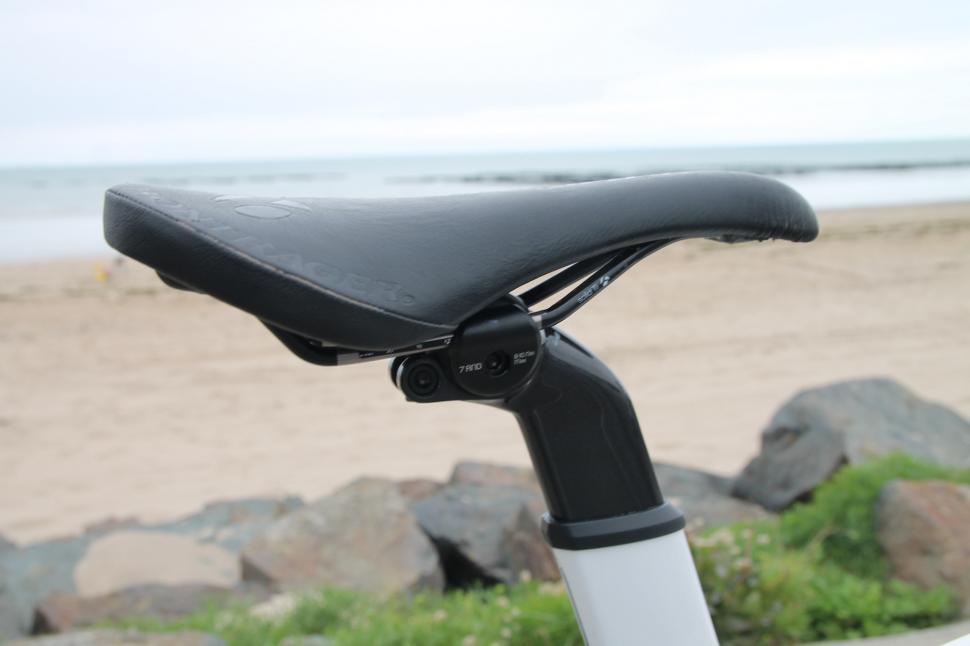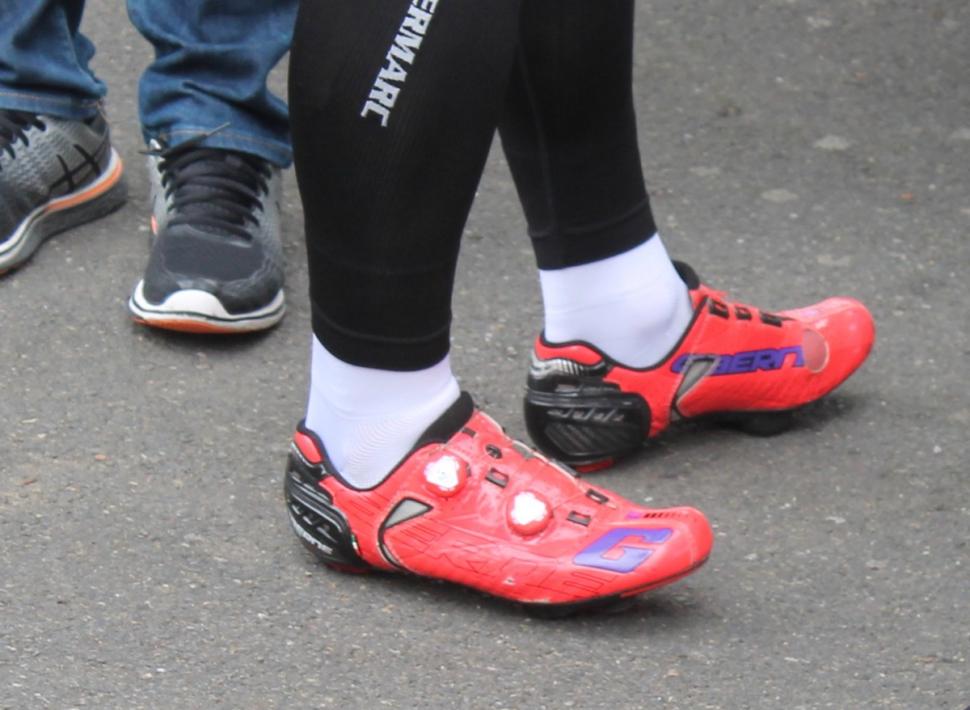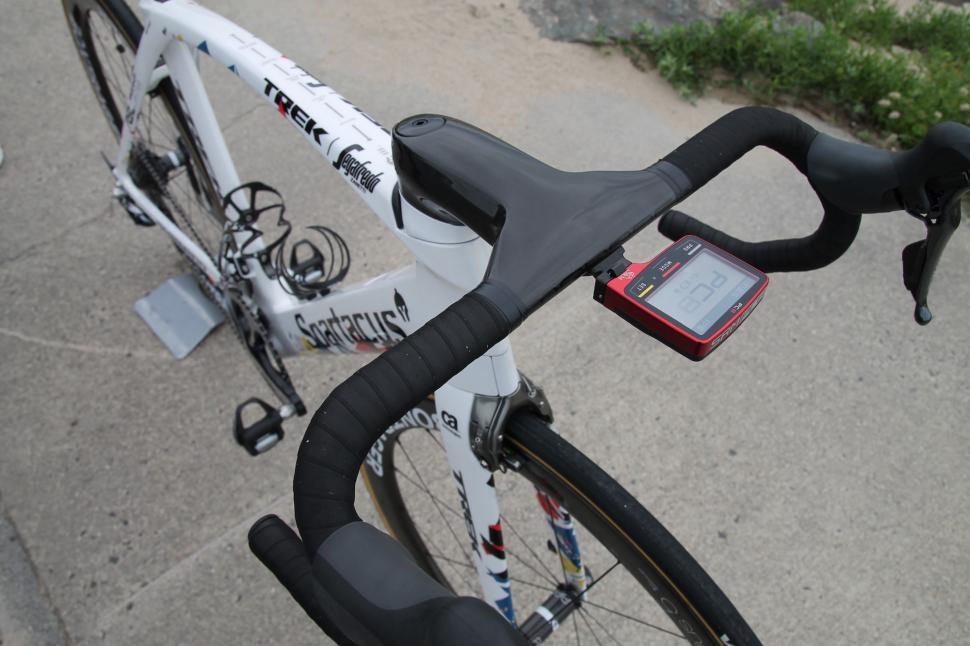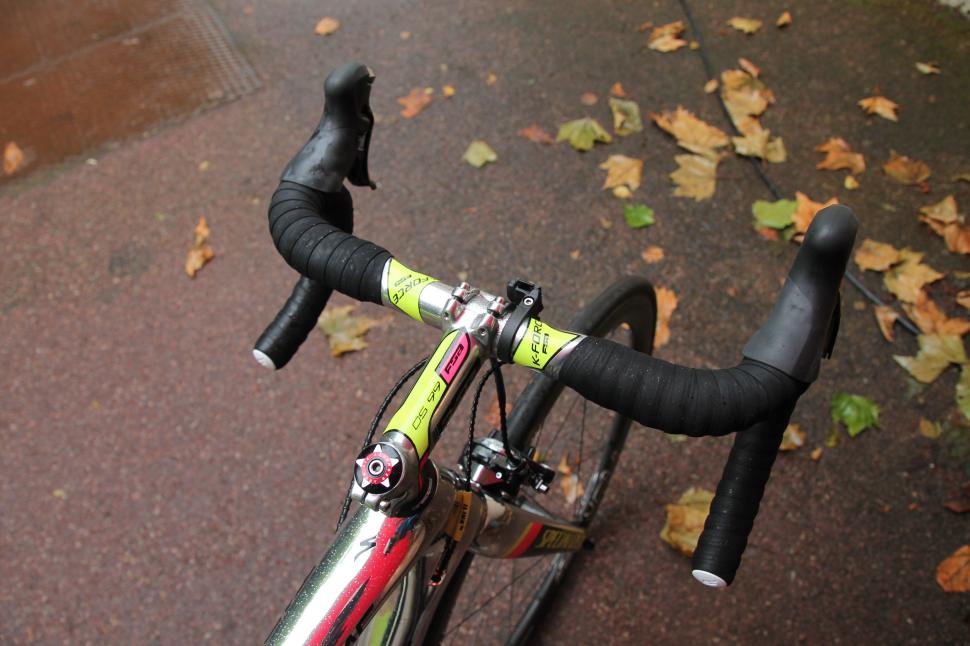- News
- Reviews
- Bikes
- Components
- Bar tape & grips
- Bottom brackets
- Brake & gear cables
- Brake & STI levers
- Brake pads & spares
- Brakes
- Cassettes & freewheels
- Chains
- Chainsets & chainrings
- Derailleurs - front
- Derailleurs - rear
- Forks
- Gear levers & shifters
- Groupsets
- Handlebars & extensions
- Headsets
- Hubs
- Inner tubes
- Pedals
- Quick releases & skewers
- Saddles
- Seatposts
- Stems
- Wheels
- Tyres
- Tubeless valves
- Accessories
- Accessories - misc
- Computer mounts
- Bags
- Bar ends
- Bike bags & cases
- Bottle cages
- Bottles
- Cameras
- Car racks
- Child seats
- Computers
- Glasses
- GPS units
- Helmets
- Lights - front
- Lights - rear
- Lights - sets
- Locks
- Mirrors
- Mudguards
- Racks
- Pumps & CO2 inflators
- Puncture kits
- Reflectives
- Smart watches
- Stands and racks
- Trailers
- Clothing
- Health, fitness and nutrition
- Tools and workshop
- Miscellaneous
- Buyers Guides
- Features
- Forum
- Recommends
- Podcast
TECH NEWS
 Tour de France 2016 Madone IsoSpeed Decoupler - 1.jpg
Tour de France 2016 Madone IsoSpeed Decoupler - 1.jpgTour Tech 2016: How Tour de France riders stay comfortable
Tour de France riders spend a helluva lot of time in the saddle over the three week race and it's vital for them to stay comfortable in order to perform at their best.
Pro riders don't go as crazy with their comfort-inducing tricks as they do in the Cobbled Classics like Paris-Roubaix, say, but here's how some of them make sure they carry on feeling good throughout the race.
Saddle technology
Of course, choosing the right saddle plays a big part in your cycling comfort, and what’s right for one rider isn’t necessarily right for another.
Fabian Cancellara’s saddle might look normal but, believe us, there’s virtually no padding underneath the cover. It’s an old Bontrager Team Issue saddle and it's very, very hard, but if it works for him, who are we to argue?
Geraint Thomas goes to the opposite extreme. His Fizik Arione has a mattress depth of padding. This looks like the triathlon version of the Arione but we’ve been told that it’s a model that was made especially for the Cobbled Classics and a few riders have stuck with it.
Loads of riders choose saddles with cutaway centres. This is a Pro Griffon on the bike of one of the Giant-Alpecin riders, for example.
As well as offering grip, Prologo’s CPC finish is designed to absorb vibration and shock, stimulate blood flow and eliminate tingling and numbness, and allow a continuous flow of air. We saw this new version of the Nago Evo on Rui Costa’s bike.
Wider tyres
Whereas 23mm tyres ruled in the pro peloton until quite recently, the vast majority of bikes are now fitted with 25s.
Lower rolling resistance and increased grip are often cited as reasons contributing to the shift, but greater comfort is certainly important. Essentially, larger tyres mean you get a larger cushion of air between you and the ground.
Trek’s IsoSpeed decoupler
Trek Segafredo ride the Trek Madone 9 Series which features an IsoSpeed decoupler to smooth the ride. It's a technology based on a tube within a tube design.
The outer seat tube that you see is shaped for aerodynamics and isn't particularly flexible. But within that there's a much skinnier round inner seat tube, bonded to the outer just above the bottom bracket and linked to the rest of the frame via a pivot up at the seat cluster. The inner seat tube can flex easily, allowing movement at the seatmast and saddle.
Read our review of the Trek Madone 9 Series here.
Bianchi’s CounterVail technology
LottoNL-Jumbo riders are racing on the Bianchi Oltre XR4 which features CounterVail (CV) technology that’s designed to cancel vibration.
The idea is that the addition of this visco-elastic polymer into the carbon-fibre frame eliminates road buzz and reduces rider fatigue. Bianchi say that this will allow you to hold your aero position for longer so you’ll ride faster.
You could argue that the CounterVail tech is more about performance than comfort, but the two are inextricably linked.
Giant’s Variant integrated seatpost
Team Giant-Alpecin use the lightweight Giant TCR Advanced SL with its Variant integrated seatpost that’s designed to provide enough compliance for comfort, but not so much that there’s excess movement during seated pedalling.
“Drawing from knowledge gained from the development of Giant’s Vector and D-Fuse seatposts, both the proprietary shape — which allows for a more consistent wall thickness — and the integrated design allow Giant’s engineers to achieve the optimal TCR ride feel,” say Giant.
Of course, many other brands would say something similar about their own frames, we’re just pointing out that some degree of compliance is engineered in at the design stage.
Andre Greipel’s shoes
It looks like Lotto-Soudal’s Andre Greipel has modified his Gaerne shoes with the addition of a hole in the upper round about his big toe joint. It’s the same on both shoes.
We don’t know the reason for this but it seems reasonable to speculate that it is to reduce pressure.
Any podiatrists out there fancy venturing an opinion?
Fabian Cancellara’s custom handlebar
Trek-Segafredo’s Fabian Cancellara uses a modified version of the one-piece carbon fibre aero handlebar/stem that Trek developed for the Madone. Instead of the wide and flat top sections of the regular handlebar, Cancellara requested a smaller profile top section. We’re told this still provides an aerodynamic benefit but it enables Cancellara to maintain his desired reach. On that basis, we reckon this just about sneaks in as a comfort feature.
Contador’s double taping
We’re not 100% sure but we think that Alberto Contador was using a double layer of handlebar tape before he abandoned the race. We know that, like many other riders, he has in the past. It could be that he has some gel under that tape.
Double taping is particularly popular for the Cobbled Classics but some riders – pros and amateurs – do it routinely. It’s a simple and lightweight (and cheap) way to add comfort to the front end.
Ditching the base layer
Another TT at @letour today.. Off at 16:59 CET
@simongillphoto pic.twitter.com/ajFdNE346U— Chris Froome (@chrisfroome) July 21, 2016
Some cyclists wear a base layer throughout the summer because they believe it’s the best way to manage sweat, others ditch it because they believe it’s the best way to keep the temperature down. It’s one of those eternal debates you get in cycling. Chris Froome clearly thinks that going without his – let’s call it what it is – vest is the way forward on a hot day, especially if you're wearing a high tech onesie skinsuit.
Mat has been in cycling media since 1996, on titles including BikeRadar, Total Bike, Total Mountain Bike, What Mountain Bike and Mountain Biking UK, and he has been editor of 220 Triathlon and Cycling Plus. Mat has been road.cc technical editor for over a decade, testing bikes, fettling the latest kit, and trying out the most up-to-the-minute clothing. He has won his category in Ironman UK 70.3 and finished on the podium in both marathons he has run. Mat is a Cambridge graduate who did a post-grad in magazine journalism, and he is a winner of the Cycling Media Award for Specialist Online Writer. Now over 50, he's riding road and gravel bikes most days for fun and fitness rather than training for competitions.
Latest Comments
- chrisonabike 21 min 2 sec ago
So what you're saying is the "baseline" would move from "lit up like a Christmas tree" to "like a chameleon at a rave" * ... and it would have...
- Oldfatgit 1 hour 16 min ago
Thank you for asking Aidan, much appreciated....
- eburtthebike 9 hours 11 min ago
A sad case, and one with no winners. The driver can thank her lucky stars that the cyclist wasn't more seriously injured and that the court was...
- ktache 10 hours 16 min ago
And I liked endura too. Got a nice long sleeve mostly merino long sleeve a little while back, in orange.
- matthewn5 10 hours 44 min ago
No, the Ebay lights have been around for several years, this Lezyne light just appeared.
- chrisonabike 11 hours 7 sec ago
They shouldn't worry - the second part of the "tariff" refrain is "they can make it in US and they'll do very well".
- Mr Blackbird 11 hours 32 min ago
"At the going down of the sun, it will get in our eyes and cause us to crash into things."
- Rendel Harris 11 hours 40 min ago
Been living in the area thirty years now and Brixton Cycles (and local riders wearing their famed Rastafarian colours jersey) has been an iconic...
- chrisonabike 16 hours 35 min ago
Indeed - but again these are perhaps questions we should keep asking. Even if the immediate answer is "well we are where we are" or "how on earth...













Add new comment
2 comments
...
Crushed painkillers in bidons more like
Pictures of the Oltre XR4 always welcome, keep them coming!